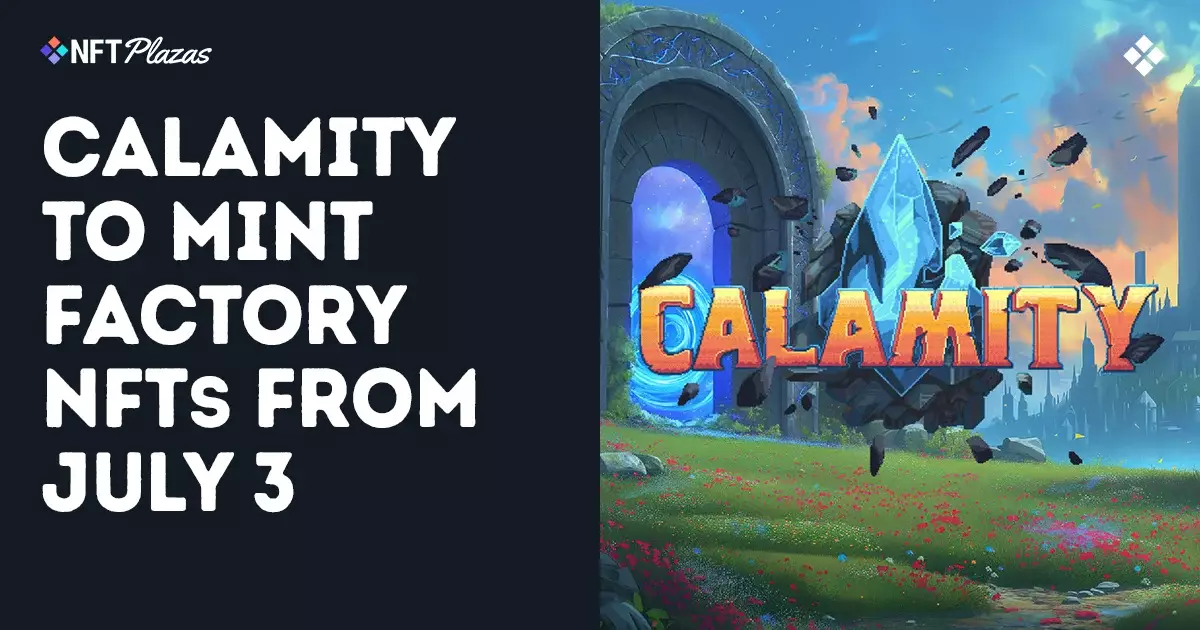The recent announcement by Calamity, a blockchain-backed MMORPG, about their upcoming Factory NFTs provides another dose of hope for the intersection of gaming and Web3 technology. On the surface, these NFTs promise a “personal in-game space” and the opportunity to stake for the new $WYRM token, seemingly giving players tangible benefits and a leg up in competitive play. However, underneath these glossy terms lies a familiar pattern of inflated expectations and potential pitfalls. The repeated emphasis on “real utility,” crafting options, and staking rewards should not obscure an essential reality: this model risks commodifying what should fundamentally remain an engaging democratic gaming experience. Players are subtly nudged into speculation and investment rather than pure enjoyment.
A Premature Push on Play-to-Earn Mechanics
The roadmap’s ambition to debut “performance-based” play-to-earn mechanics during Season 1 later this year feels rushed and overhyped. While play-to-earn principles are often touted as empowering for gamers, they frequently spiral into pay-to-win economies where early capital investment overshadows skill or dedication. The structure Calamity proposes — merging Tier 1 Factory NFTs to create more powerful Tier 2 through Tier 5 variations — clearly incentivizes large-scale acquisition by deep-pocketed players, potentially damaging game balance and alienating casual users. By linking in-game progression so directly with financial stakes, there’s a real risk that strategic depth and creativity get eclipsed by economic barriers.
The Price Barrier and Its Discontents
Factory NFTs are priced at $40 each during the Early Bird sale, with nearly 10,000 tokens on offer. Charging upfront for what is essentially an in-game property echoes the dangerous trend of excluding lower-income players from full participation in these ecosystems. The fact that buyers can only pay in stablecoins on Ronin or Ethereum adds further friction, limiting accessibility. This model places Calamity at odds with the traditional free-to-play MMO paradigm, which prioritized equal opportunity for gamers. Instead, barriers to entry effectively gatekeep content. This approach potentially fractures the player base into “investors” versus “spectators,” undermining the community spirit central to MMORPGs.
Speculation Masquerading as Innovation
Calamity’s use of NFTs and token staking is packaged as cutting-edge innovation, but sceptics should see through a largely speculative veneer. The roadmap’s promise of “unique mechanics” tied to Factory NFTs amounts to incentivized token utility more than genuine gameplay innovation. Historically, NFT projects have struggled to sustain long-term player interest beyond early investor enthusiasm. The reliance on staking $WYRM tokens to generate rewards from these digital assets is essentially a financial product embedded within a game. When players’ motivations shift from fun to maximizing returns, the game risks becoming a marketplace first and a recreational space second.
Blockchain’s Compatibility with MMORPGs: A Questionable Fit
Integrating blockchain technology into a genre like MMORPGs—which thrive on social experiences, deep narratives, and player cooperation—presents an awkward fit. The emphasis on digital land ownership and merging NFTs hints at a disruptive economy overlaying a classic gaming formula reminiscent of Diablo or Lineage II, but the tension between economic incentives and social gameplay is palpable. MMORPGs grow through shared community engagement, not financial stratification. By introducing heavy NFT elements, Calamity potentially commodifies social interactions, altering the organic communal bonds foundational to such games.
A Center-Right Critique: Innovation Should Not Undermine Meritocracy
From a center-right liberalist perspective, while entrepreneurial spirit and innovation in gaming are welcome, they must not undermine meritocratic values. Calamity’s NFT model prioritizes capital investment over individual effort and talent, casting shadows on fair competition and equal opportunity. Digital property rights and rewards should complement—not override—the intrinsic enjoyment and skill development that define MMORPGs. The marketplace should empower players but not monopolize participation or skew rewards disproportionately towards investors. Responsible innovation requires balancing free enterprise with sustainable community structures.
How Calamity Could Avoid Common NFT Pitfalls
If Calamity wants to genuinely advance gaming with NFTs, the focus must shift from speculative dynamics to fostering accessibility and meaningful engagement. Limiting upfront costs or offering pathways for non-investor players to access Factory NFTs could democratize the ecosystem. Additionally, designing performance metrics that reward skill rather than factory tier alone would reinforce meritocracy. Transparency regarding the token economy, accompanied by robust safeguards against market manipulation, is critical. The future of blockchain gaming depends on nuanced integration, not aggressive monetization strategies threatening to fracture player bases.
In essence, Calamity’s NFT rollout is another cautionary tale in blockchain gaming where innovation risks being subsumed by financial motives. Only by prioritizing equitable player experience over speculative gain can such projects hope to realize meaningful and lasting success.














